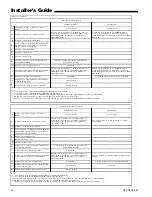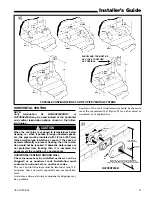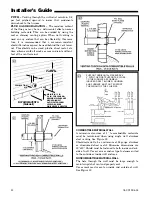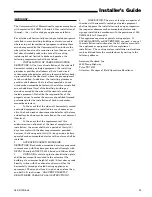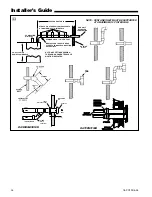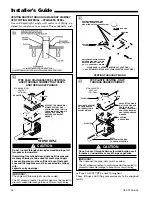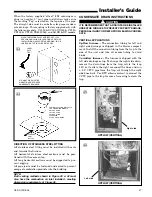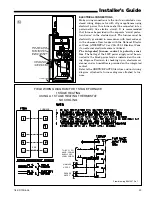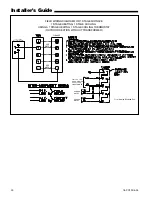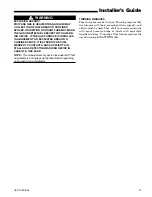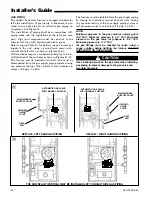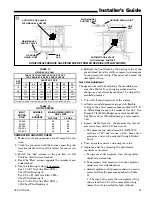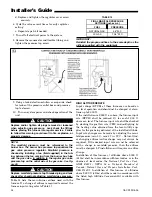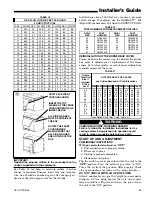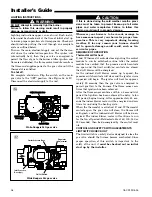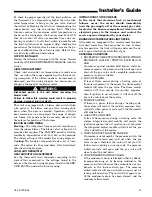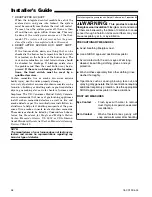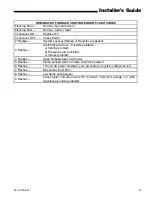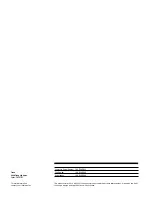
34
18-CD19D5-25
Installer’s Guide
R
d. Replace and tighten the regulator cover screw
securely.
6. Cycle the valve several times to verify regulator
setting.
a. Repeat steps 5-6 if needed.
7. Turn off all electrical power to the system.
8. Remove the manometer and flexible tubing and
tighten the pressure tap screw.
9. Using a leak detection solution or soap suds, check
for leaks at the pressure outlet boss and pressure
tap test screw.
10. Turn on system power and check operation of the
unit.
▲
CAUTION
!
Replace and/or tighten all plugs removed or loosened
when adjusting gas pressure. Leak check the fittings
before placing the furnace into regular service. Failure
to follow this warning could result in fire, explosion, or
property damage.
NOTE:
The manifold pressure must be referenced to the
burner box. The burner box pressure tap equalizes the
gas valve pressure regulator. Manifold pressure is
checked by installing a tee (field supplied) in the tub-
ing, between the tee coming from the burner box tube
and the gas valve, in addition to the regular gas valve
pressure tap on the outlet
side of the gas valve. See Fig-
ure 49.
▲
CAUTION
!
Replace manifold pressure tap threaded plug and leak
check after checking/ adjusting manifold gas pressure.
Table 14 lists the main burner orifices used with the
furnace. If a change of orifices is required to correct the
furnace input rating refer to Table 17.
TABLE 15
FINAL MANIFOLD PRESSURE
SETTINGS (inches w.c.)
FUEL
PRESSURE
NATURAL GAS
3.5" W.C.
LP GAS
10.5" W.C.
HIGH ALTITUDE DERATE
Input ratings (BTUH) of these furnaces are based on
sea level operation and should not be changed at eleva-
tions up to 2,000 ft.
If the installation is 2,000 ft. or above, the furnace input
rate (BTUH) shall be reduced 4% for each 1,000 ft.
above sea level. The furnace input rate shall be checked
by clocking the gas flow rate (CFH) and multiplying by
the heating value obtained from the local utility sup-
plier for the gas being delivered at the installed altitude.
Input rate changes can be made by adjusting the mani-
fold pressure (min 3.0 - max 3.7 in. W.C. - Natural Gas)
or changing orifices (orifice change may not always be
required). If the desired input rate can not be achieved
with a change in manifold pressure, then the orifices
must be changed. LP installations will require an orifice
change.
Installation of this furnace at altitudes above 2,000 ft.
(610m) shall be in accordance with local codes, or in the
absence of local codes, the
National Fuel Gas Code,
ANSI Z223.1/ NFPA 54 or National Standard of
Canada, Natural Gas and Propane Installation Code,
CSA B149.1.
Installation of this furnace at altitudes
above 2,000 ft (610m) shall be made in accordance with
the listed high Altitude Conversion Kit available with
this furnace.
IMPORTANT:
Reinstall the propane orifices to the same depth as the
orifices supplied with the equipment.

